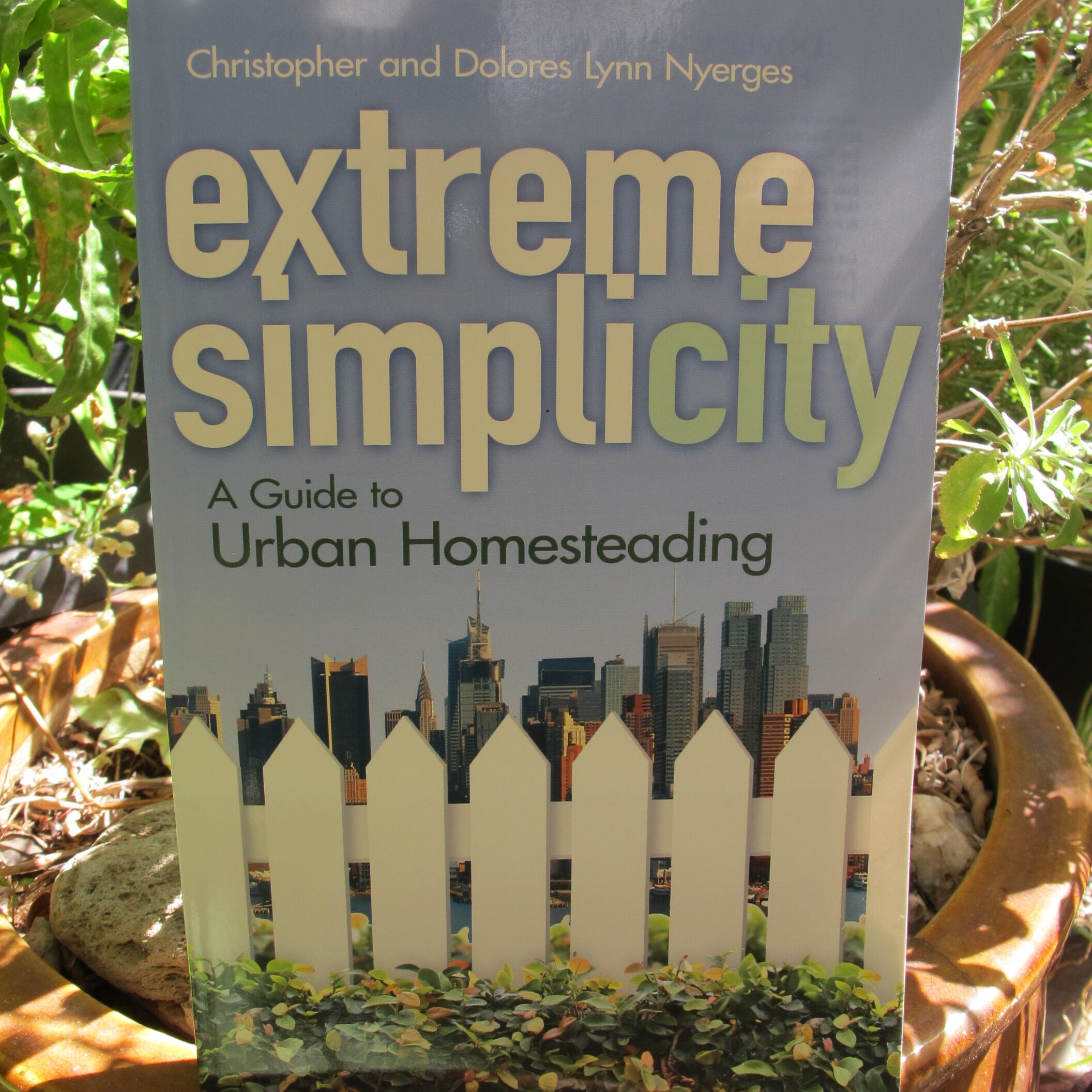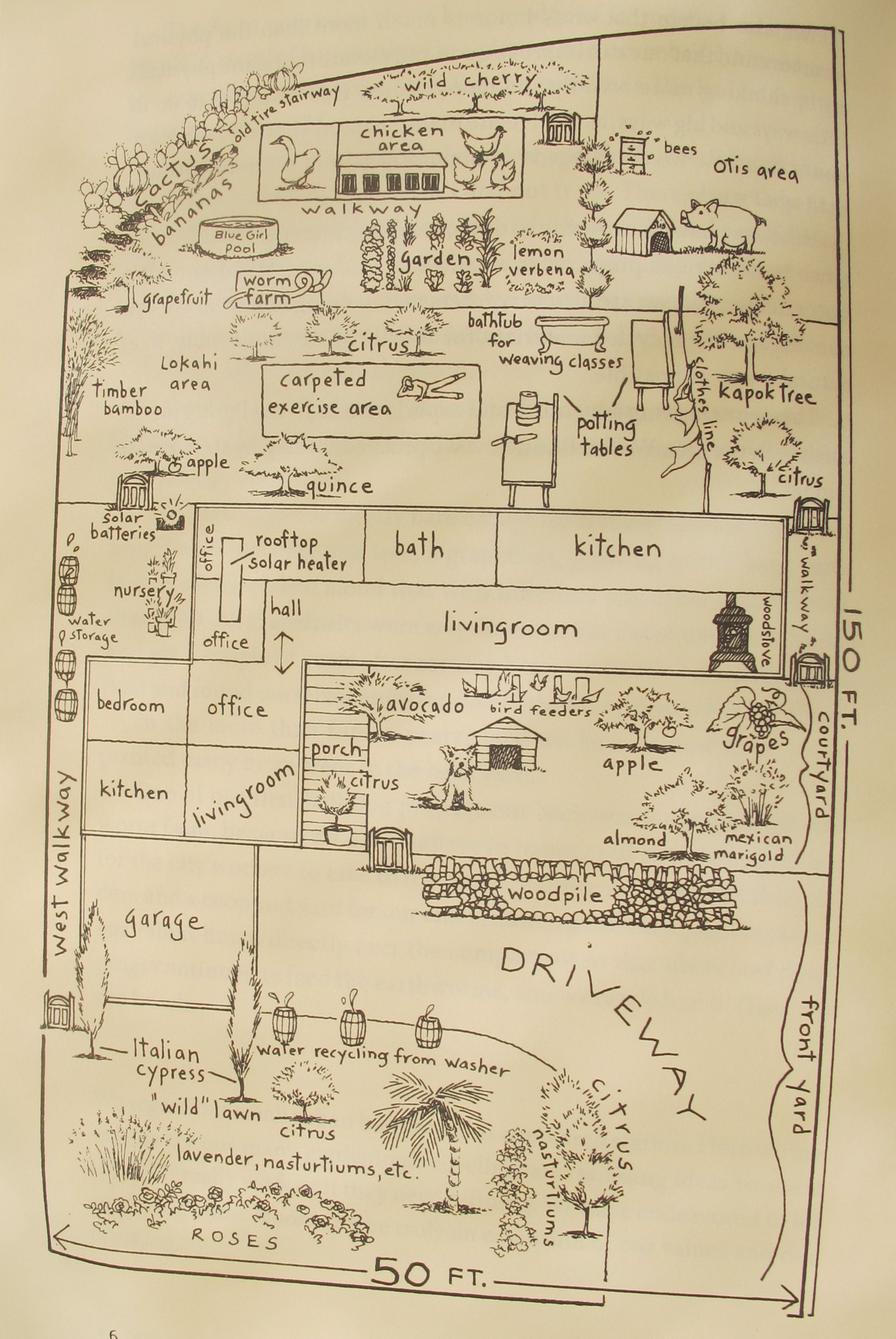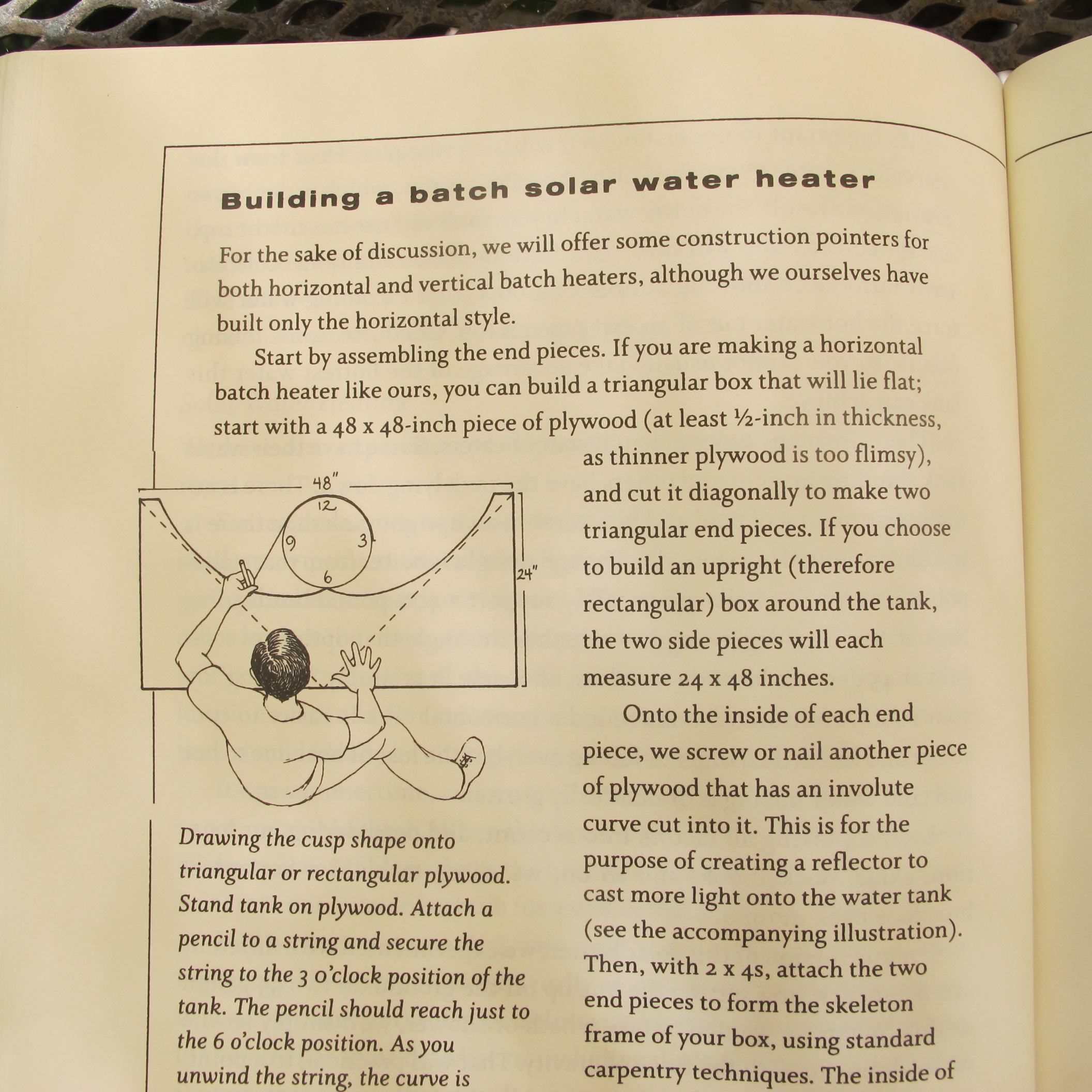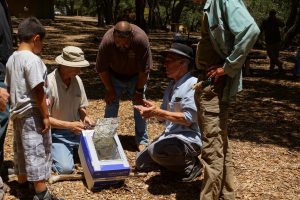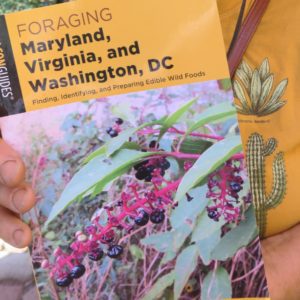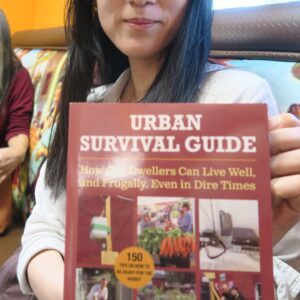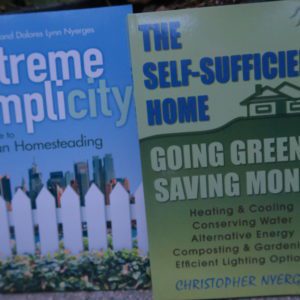Description
EXTREME SIMPLICITY: A Guide to Urban HOMESTEADING, by Christopher and Dolores Lynn Nyerges.
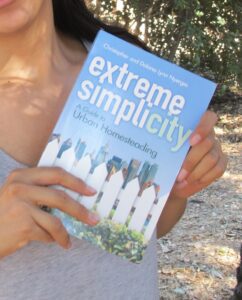

Backstory: WHY I WROTE MY BOOKS:EXTREME SIMPLICITY: Homesteading in the City
[Nyerges is the author of over 20 books, and leads classes through the School of Self-reliance. He can be reached at Box 41834, Eagle Rock, CA 90041, or www.SchoolofSelf-Reliance.com.]
When Dolores and I purchased a run-down house in Highland Park in 1986, we worked towards our goal of “living lightly on the earth,” even though we had a small budget and lived in a small suburban Los Angeles home.
We were doing what our Appalachian friend used to describe as “living country in the city.” We pursued all aspects of self-reliance, and wrote about it. Starting as soon as we moved in to our new home in 1986, we began task by task with limited income. We were never fans of a front lawn, so one of our first tasks was to invite a tree pruner to dump a load of woodchips in the front lawn area. We used our front lawn to grow food and fruit trees. We recycled our wash water into the yard, using the simplest of technologies. We collected rain water, had chickens, a duck, bees, and a pig. Eventually, we installed solar water heating, and enough solar panels and inverter to power at least part of our home. We installed a wood stove, fueled mostly by “scrap wood,” and we planted fruit trees and food everywhere.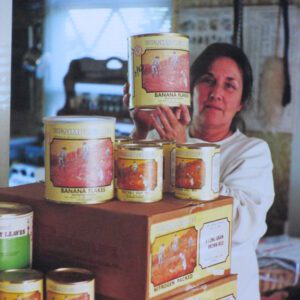
One of the problems we found with our home was that it was very hot indoors during the summer. So we installed metal security doors at the front and rear, and were able to leave the doors open all night for the breeze. We also painted the roof with a white elastomeric product which reflected sunlight, and produced an indoor temperature of about 15 to 20 degrees cooler in the summer.
At that time, I was writing articles for Mother Earth News, Wilderness Way, American Survival Guide, and various other magazines and newspapers. Sometime in 1999, I got a call from an editor at Mother Earth News. They wanted to know if I could write an overview article about the methods of “alternate health” that Dolores and I practiced. I said yes. They then said, good, and we’d like to come out there from New York and take pictures of you in your home and put you on the cover. We said yes. The article came out, all about herbs and healthful living, and the ancient healing methods of Hippocrates. We got a lot of attention about what we considered very normal, something that everyone should be doing.
Shortly after that issue of Mother Earth News was published, we got a call from a book publisher who asked if we could turn that health article into a book. Of course, we said yes. But when we eventually submitted the manuscript to the publisher, they said, hmmm, not exactly what we were looking for. [That book, “Integral Health,” is still unpublished, though I use it frequently as the basis for lectures]. They wanted a complete summary of all sorts of “alternative health” methods, though they had not told us that in the beginning. So we talked about it, and they asked us if we could just write about how we live our life in Los Angeles,, which we did, and it became “Extreme Simplicity: Homesteading in the City.”
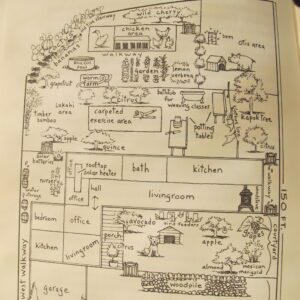
We described our efforts to do “integral gardening” on every bit of usable land, to produce food (for people and wildlife), medicines, fragrance, shade, and useful tools. We described how we worked to use as little electricity as possible (for heating, cooling, everything), how to recycle everything, and how to waste very little.
Though the book has a lot of “how to,” it’s also full of personal stories and rich reading of the learning we experienced along the way. There is a section on recycling, and a unique section about the economics of self-reliance, my favorite chapter.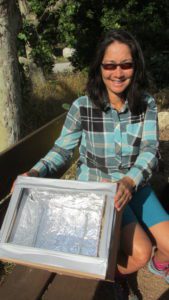
“Extreme Simplicity” is still in print, and still prompting conversations. It’s available wherever books are sold, from Amazon, and from the store at School of Self-Reliance, Box 41834, Eagle Rock, CA 90041; or www.SchoolofSelf-Reliance.com.
HERE ARE SOME SELECTED EXCERPTS:
TIME AND THE QUALITY OF LIFE
Many people today believe that they’re spending all their time working, yet with very little in return. Unfortunately, such realizations may come too late to be remedied.
We think that the Amish people have the right idea when they keep their schools and work close to home. They don’t have to go a long way to a job, thereby avoiding wasted time and energy, unnecessary expenses, and disconnection from their community. They can protect their families from undesirable influence, and there is the added bonus of having youngsters nearby where they can learn a trade from an early age. The Amish are firmly committed to valuing “quality of life” over all the stuff that our modern society deems important or indispensable – car, home entertainment system, fancy clothes, foods bought for “convenience” and prestige rather than fresh garden flavor and nutritional value.
4 MAGIC WAYS TO IMPROVE YOUR FINANCIAL SITUATION
Once, during a period of homelessness before we were married, Christopher was engulfed in thoughts of “poor me” and “I’m destitute,” and he could scarcely see a way out of the darkness. Dolores provided him with a simple set of practical tools that anyone can use if only they choose to do so. Here are four “magic” ways to improve your financial situation:
- Never waste anything.
- Continually improve your personal honesty.
- Leave every situation or circumstance better than you found it.
- Tithe to the church (or organization) of your choice.
We know that these are genuine practical solutions. We have heard people say that they cannot make these efforts – such as tithing, or improving an environment – because “we are poor.” Our perspective is that they have their reasoning backwards. They are poor because they do not engage themselves in the world in these ways. Logical thinking leads to erroneous conclusions when the premise is false.
3 STEPS TO HOUSEHOLD ENERGY EFFICIENCY
- You can do without some electrical devices.

This will probably involve changing your behavior, for instance, thinking twice before switching on an electrical tool or appliance when a non-electric alternative will work just as well or better.
- You can learn to use your existing devices more efficiently.
This step, too, requires changes in habit, but once you’ve understood the extra expenses caused by inefficiency and waste, you’ll feel good about it – plus you’ll save money by practicing efficiency.
- You can purchase new appliances that render your household inherently more energy efficient.
This step requires initial outlays of money, and in some cases higher short-term expenses, but with certain especially wasteful appliances, the best way to save energy and money is to immediately replace the old, wasteful model.
WOOD FIREPLACE
Our freestanding fireplace has completely transformed our home. We would strongly encourage anyone without one already to seriously consider installing one. On very cold nights, we had been using those small electric heaters that really drive up your electric bill. The fireplace made the house really feel like a home, and we now are uncertain how we got along without it.
In our case, the transition to wood heating was fairly easy, because we had plenty of firewood readily available. We were actually doing a neighbor a favor by cleaning up and carting off large amounts of dead and fallen wood from his property. Our first season of firewood came entirely from our weekly cleaning of his yard, just for the cost of our labor. How’s that for a win-win situation?

